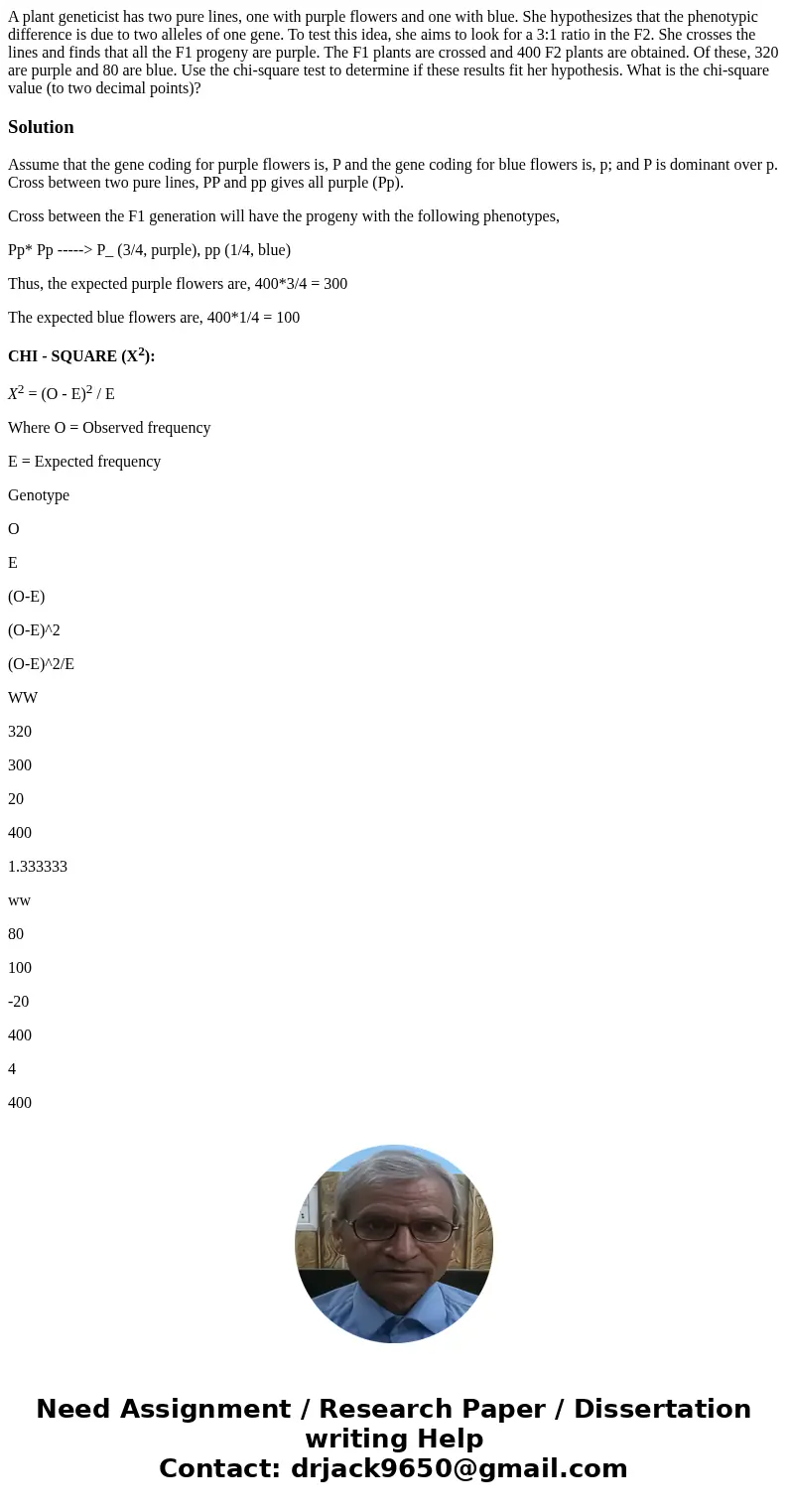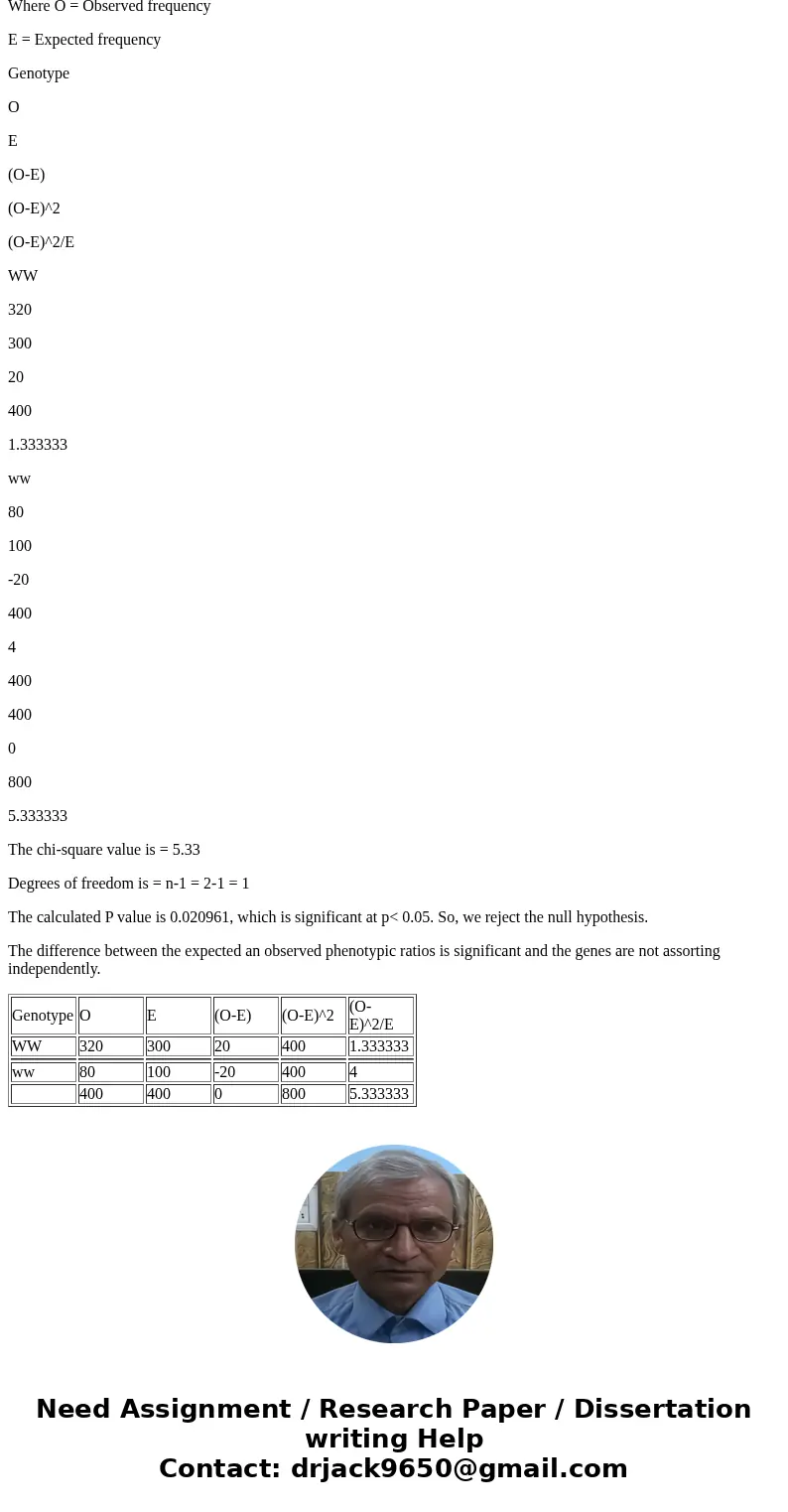A plant geneticist has two pure lines one with purple flower
A plant geneticist has two pure lines, one with purple flowers and one with blue. She hypothesizes that the phenotypic difference is due to two alleles of one gene. To test this idea, she aims to look for a 3:1 ratio in the F2. She crosses the lines and finds that all the F1 progeny are purple. The F1 plants are crossed and 400 F2 plants are obtained. Of these, 320 are purple and 80 are blue. Use the chi-square test to determine if these results fit her hypothesis. What is the chi-square value (to two decimal points)?
Solution
Assume that the gene coding for purple flowers is, P and the gene coding for blue flowers is, p; and P is dominant over p. Cross between two pure lines, PP and pp gives all purple (Pp).
Cross between the F1 generation will have the progeny with the following phenotypes,
Pp* Pp -----> P_ (3/4, purple), pp (1/4, blue)
Thus, the expected purple flowers are, 400*3/4 = 300
The expected blue flowers are, 400*1/4 = 100
CHI - SQUARE (X2):
X2 = (O - E)2 / E
Where O = Observed frequency
E = Expected frequency
Genotype
O
E
(O-E)
(O-E)^2
(O-E)^2/E
WW
320
300
20
400
1.333333
ww
80
100
-20
400
4
400
400
0
800
5.333333
The chi-square value is = 5.33
Degrees of freedom is = n-1 = 2-1 = 1
The calculated P value is 0.020961, which is significant at p< 0.05. So, we reject the null hypothesis.
The difference between the expected an observed phenotypic ratios is significant and the genes are not assorting independently.
| Genotype | O | E | (O-E) | (O-E)^2 | (O-E)^2/E |
| WW | 320 | 300 | 20 | 400 | 1.333333 |
| ww | 80 | 100 | -20 | 400 | 4 |
| 400 | 400 | 0 | 800 | 5.333333 |


 Homework Sourse
Homework Sourse